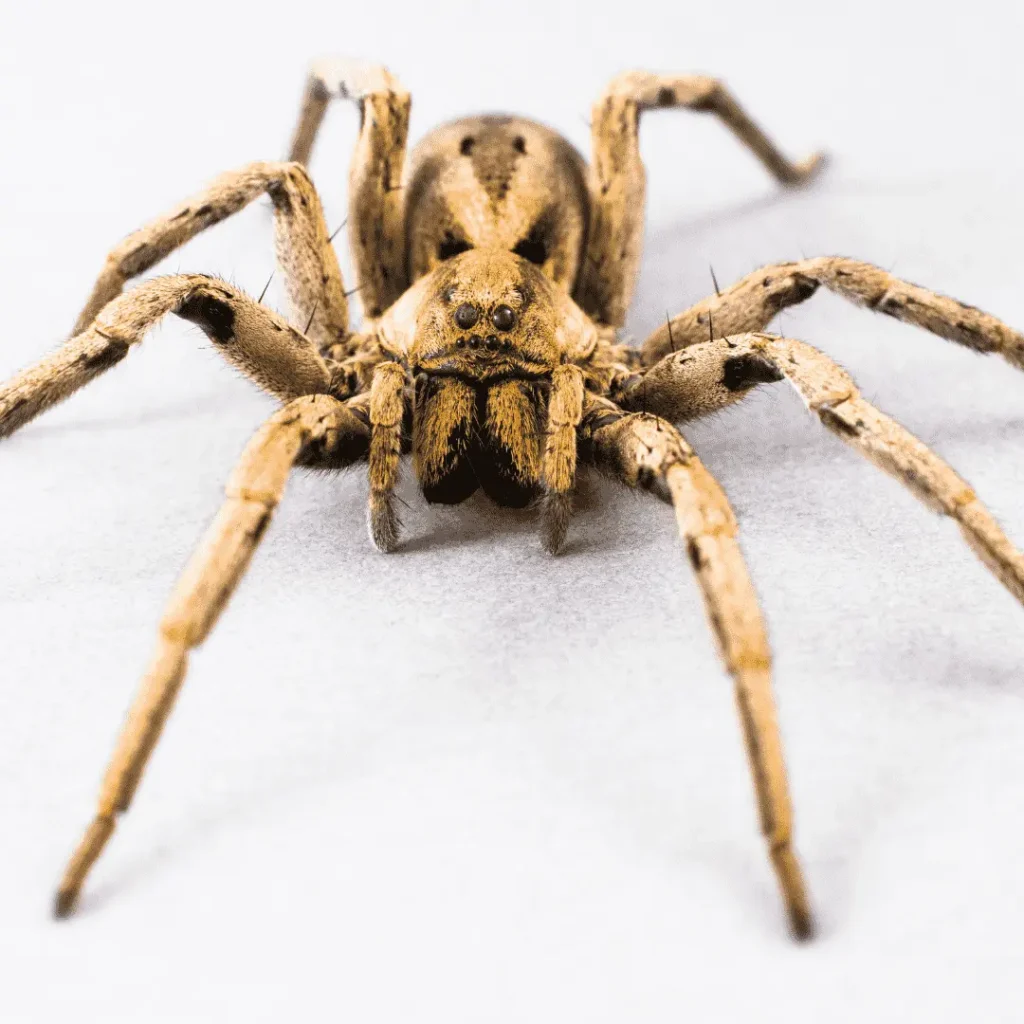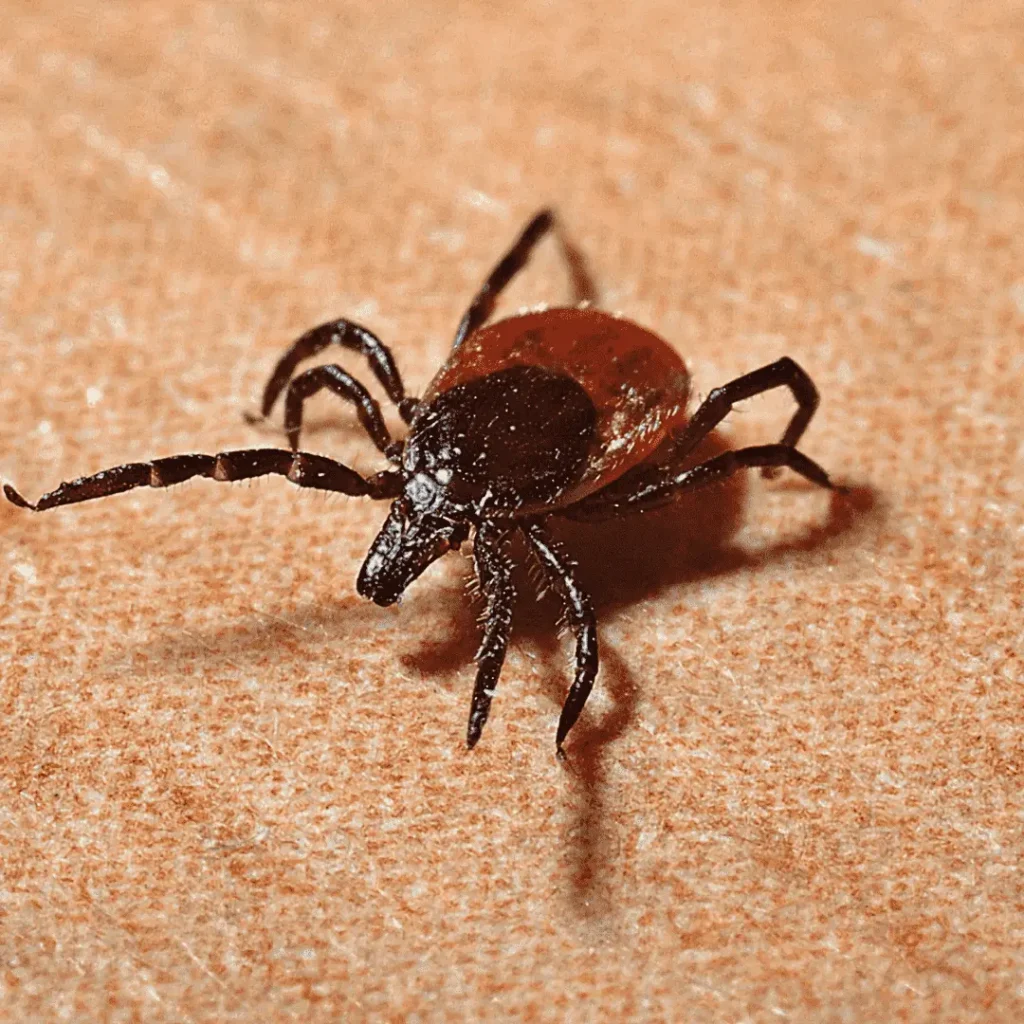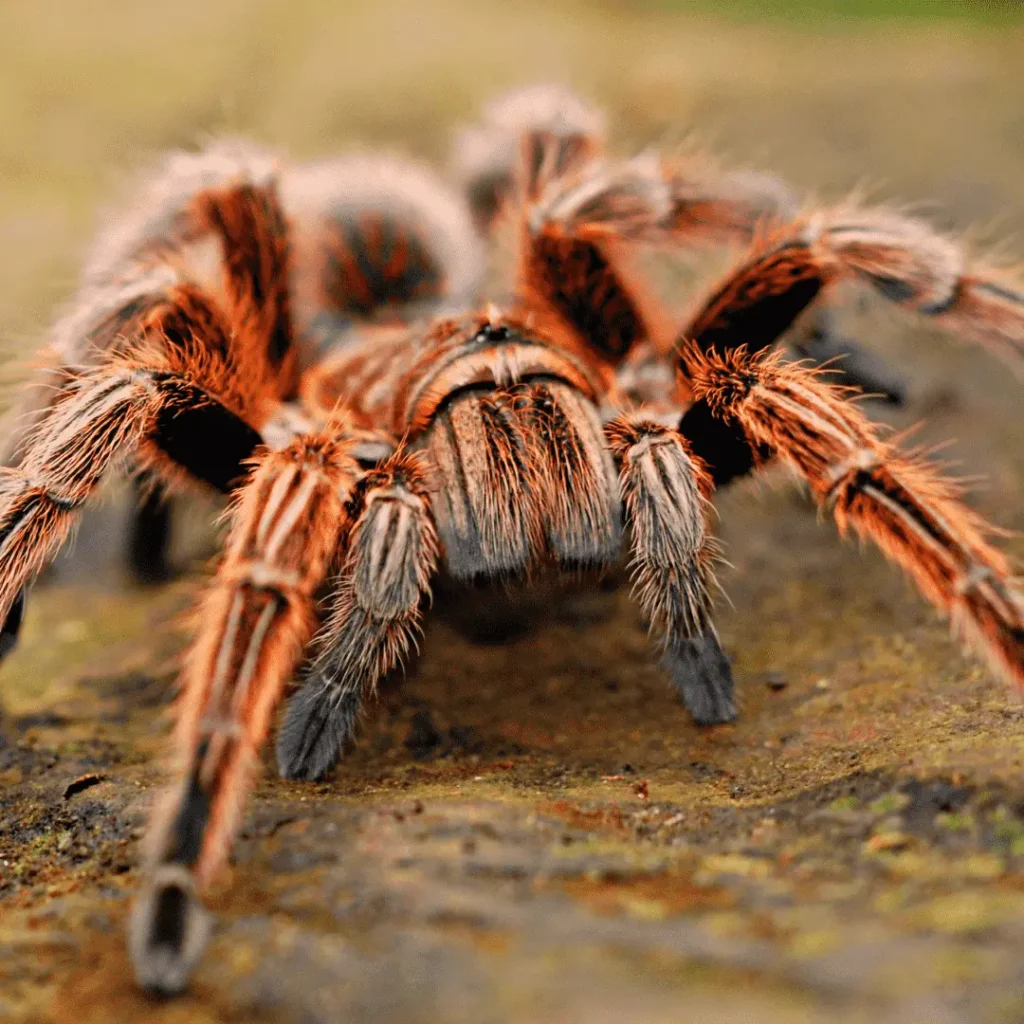Arachnids looks like insects so majority of people thinks Arachnids are insects but Arachnids in the class Arachnida are invertebrates arthropods primarily carnivorous having mostly eight legs, a well-developed head, and a hard external skeleton. Spiders, ticks, mites, camel spiders, whip spiders, and daddy longlegs come under this category. There are more than 100,000 species of arachnids found on the planet Earth of which more than 51,000 species are spiders. The species of arachnids are more than mammals species. Mites and ticks are the species that are economically known to everyone due to their transmission of viruses to different organisms (humans, plants, animals). They mostly live on land but some species live in freshwater and marine environments.
Table of Contents
Arachnids Characteristics:
The species is considered as an Arachnids if they have the following characteristics.
- Arachnids have two primary body segments.
- Arachnids move using their eight legs.
- Antennae is absent in arachnids.
- Arachnids have multiple pairs of simple eyes.
- The majority of Arachnids are carnivorous(eating insects mostly).
- Exoskeleton of Arachnids is hard and made of chitin.
- Some species of Arachnids produce venom.
- Some species lay eggs and some exhibit parental care.
- Arachnids do not have wings.
Solution of Arachnids are insects:
This is not true Arachnids are insects because most of the characteristics are not found in insects. We discuss similar and different features that clear the misconception that arachnids are insects.
Similarities:
Due to these similarities mention below peoples thinks Arachnids are insects.
- Insects and Arachnids have an exoskeleton(external skeleton) that provides support and protection for their bodies.
- Insects and Arachnids both have segmented bodies.
- Insects and Arachnids both have joined legs.
- Insects and Arachnids both undergo molting(ecdysis).
- Insects and Arachnids both have advanced sensory organs like eyes and sensory hair.
- Insects and Arachnids both have sensory organs like eyes and sensory hairs.
- Both are found in different habitats (desert, forest, aquatic environment).
- Some species of both are carnivorous.
- Insects and arachnids play a vital role in balancing the environment in which they live.
Differences:
Due to these difference we consider Arachnids are insects is a myth.
- Body is divided into two main segments in arachnids and three in insects.
- There are four pair of legs in arachnids and three pair of legs in insects.
- Arachnids do not have antennae while insects have one pair of antennae.
- Arachnids have simple eyes while insects usually have compound eyes.
Evolution of Arachnids:
The evolution of Arachnids is an interesting journey that they made from ancient seas to the land. From about 541 to 485 million years ago, Sea scorpion creatures have lived in the oceans. Some of them around 440 million years ago migrated to the land due to the search for food like insects and other small creatures. The first true Arachnids appeared about 419 to 359 million years ago, small and similar to modern spiders. When they start living on the land they have not developed such features that the modern arachnids have. First, they introduced book lungs for breathing air and jointed appendages to navigate on the land. When they become familiar with the environment, they start to evolve to new forms in their ideal conditions about 359 to 299 million years ago. More new abilities of spiders evolved when the rise of flowering plants occurred about 252 to 66 million years ago. The extinction of the dinosaurs and the rise of mammals provided the arachnids new opportunities about 66 million years ago to the present. Finally, venom production developed in spiders and scorpions.
Orders Within Arachnida:
Each species under the Arachnida has its specific characteristics. Based on characteristics there are 9 orders in Arachnida.
1. Order Araneae:

The order Araneae is commonly referred to as spiders. The cephalothorax and the abdomen are the two distinct part of their body. They have eight legs used for movement and attached to the cephalothorax. They can produce silk. They use venom to kill other insects. They have multiple pairs of simple eyes. They are found almost everywhere on earth. Some species of Araneae can build webs but not all.
Examples:
Salticidae(Jumping Spiders), Lycosidae(Wolf Spiders) etc.
2. Order Scorpiones:

The order of Scorpiones is commonly referred to as scorpions. Their body is divided into three main parts: the cephalothorax, the mesosoma, and the metasoma. The cephalothorax had two parts: a fused head and thorax. The mesosoma contains vital organs. The metasoma part has a segmented tail. They also have eight legs. They have a stinger at the end of the scorpion’s tail used for defense or subduing the prey. They have multiple pairs of simple eyes but rely more on other sensory organs. They are predominantly nocturnal (most active during the night). They are also found almost everywhere (forest, desert, grassland, cave) on the earth. They eat other small insects and spiders. They give birth to their young ones. They live between 2 to 10 years of age. Some species can camouflage to help them to stay away from predators.
Examples:
Buthidae, Scorpionidae, Chactidae etc.
3. Order Acari:

The order Acari commonly referred to ticks and mites. They are small in size and the body segments are fused. They also have eight legs. They are almost found everywhere in the world even in human houses. Some species are herbivores, feeding on plants and algae; others are carnivorous, feeding on small invertebrates. Some species lay eggs while others produce offspring without fertilization by the male. They damage the crops and cause diseases in humans. Some species help in the decomposition of organic matter.
Examples:
Ixodidae, Sarcoptidae, Trombiculidae etc.
4. Order Opiliones:

The Order Opiliones is known as harvestmen. They look like spiders but are quite different. They have a fused body with long legs. They do not produce silk-like spiders. They have only one pair of eyes but rely more on their sense of touch. They are omnivorous because they feed both on plants and small insects. They reproduce by laying eggs. They are also almost found everywhere in the world. They cannot also build the web.
Examples:
Phalangiidae, Sclerosomatidae, Trogulidae etc.
5. Order Pseudoscorpiones:
The Order Pseudoscorpiones commonly referred to as pseudoscorpions look like scorpions but without long tails and stingers. They are small in size between 2 to 8 millimeters in length. They have venom glands located in their pedipalps. Some species can produce silk from glands located in their mouthparts. They are carnivorous and feed on different types of invertebrates. They are helpful to human beings because they prey on pests. Before mating males engage in a courtship dance. They are also found almost everywhere in the world. They live for several years depending upon the environmental conditions.
Examples:
Cheliferidae, Neobisiidae, Chthoniidae.
6. Order Solifugae:
The order Solifugae is commonly referred to as camel spiders, wind scorpions, or sun spiders. The cephalothorax and the abdomen are the two main body parts. They are found in different sizes: a few millimeters to up to 15 centimeters in length. They are carnivorous and feed on insects and other small vertebrates. They can run at speeds up to 16 kilometers per hour. Some species are nocturnal (active at night). Most species are found in dry arid environments. They can detect vibrations due to sensory hairs on pedipalps. They have two large eyes. For reproduction, they lay eggs in a burrow and guard them until they hatch.
Examples:
Galeodidae, Eremobatidae, Solpugidae.
7. Order Amblypygi:
The order Amblypygi commonly referred to whip spiders. They have a broad and flat body with two main body segments: the cephalothorax and the abdomen. They have antenniform legs which are highly sensitive. They have two large eyes and six small eyes. They are carnivorous and feed on insects and other small invertebrates. They do not have venom glands and do not build webs. There habitat is commonly in tropical and subtropical regions around the world. The male uses his pedipalps to grasp the female for reproduction. The female lays eggs and carries them on her abdomen. They are nocturnal (active at night).
Examples:
Damon diadema, Phrynus marginemaculatus, Heterophryus spp.
8. Order Thelyphonida:
The order Thelyphonida is commonly referred to as whip scorpions. They have three main body parts: prosoma, opisthosoma, and flagellum. They have lack of venom glands. They can spray a defensive liquid (acetic acid). They are carnivorous in nature and feed on insects, spiders, and other small invertebrates. They are also nocturnal and prefer to hunt in the night. There commonly habitat is tropical and subtropical regions. They preferred to live in a dark environment. The male uses his pedipalps to court the female and after that female lays eggs.
Examples:
Mastigoproctus giganteus, Thelyphonus caudatus, Hypoctonus spp.
9. Order Ricinulei:
The order Ricinulei is commonly referred to as hooded tick spiders. They are small in size ranging from 5 to 10 millimeters in length. They have eight legs like all arachnids. They have reduced eyes or have no eyes. They are carnivorous in nature and feed on small invertebrates. The male uses his third pair of legs to transfer a spermatophore to the female for fertilization and after that female chooses a secure location and lays eggs. They are mostly found in tropical and subtropical regions of Africa.
Examples:
Ricinoides westermannii, Pseudocellus spp.
FAQs
Q. 1 Is it true that arachnids are insects?
Ans. No, It is not true. Arachnids look like insects but have their unique characteristics. Its just the myth that arachnids are insects.
Q. 2 Are arachnids are dangerous for humans?
Ans. Some species of arachnids are dangerous but not all.
Q. 3 Can we keep arachnids as a pet?
Ans. Yes, some species of spiders and scorpions are not harmful but need little care.
References:
1. Shultz, Jeffrey W. (February 6, 2005). “Evolution of locomotion in arachnida: The hydraulic pressure pump of the giant whipscorpion, Mastigoproctus giganteus (Uropygi)”. Journal of Morphology. 210 (1): 13–31. doi:10.1002/jmor.1052100103. ISSN 1097-4687. PMID 29865543. S2CID 46935000.




Pingback: 1 Cockatoo Intelligence: Unlocking the Secrets of Their Mind